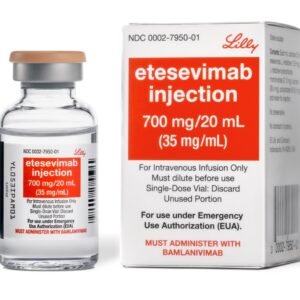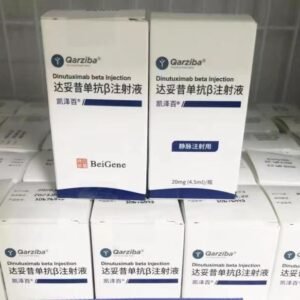Levofloxacin Hydrochloride Tablets.
Effects and efficacy:
The oral preparation and injection of this product can be used to treat mild, moderate and severe infections caused by sensitive strains in adults. Hospital-acquired pneumonia: Treatment of hospital-acquired pneumonia caused by methicillin-sensitive Staphylococcus aureus, Pseudomonas aeruginosa, Serratia marcescens, Escherichia coli, Klebsiella pneumoniae, Haemophilus influenzae or Streptococcus pneumoniae. Community-acquired pneumonia: Treatment of community-acquired pneumonia caused by methicillin-sensitive Staphylococcus aureus, Streptococcus pneumoniae, Haemophilus influenzae, Haemophilus parainfluenzae, Klebsiella pneumoniae, Moraxella catarrhalis, Chlamydia pneumoniae, Legionella pneumococcus or Mycoplasma pneumoniae. Acute bacterial sinusitis: Treatment of acute bacterial sinusitis caused by Streptococcus pneumoniae, Haemophilus influenzae and Moraxella catarrhalis. Acute bacterial exacerbation of chronic bronchitis: Treatment of acute bacterial exacerbation of chronic bronchitis caused by methicillin-sensitive Staphylococcus aureus, Streptococcus pneumoniae, Haemophilus influenzae, Haemophilus parainfluenzae or Moraxella catarrhalis. Complicated skin and appendage infections: Treatment of complicated skin and appendage infections caused by methicillin-susceptible Staphylococcus aureus, Enterococcus faecalis, Streptococcus pyogenes, or Proteus mirabilis. Uncomplicated skin and appendage infections: Treatment of uncomplicated skin and appendage infections caused by methicillin-susceptible Staphylococcus aureus or Streptococcus pyogenes, including abscesses, cellulitis, furuncle, impetigo, pyoderma, and wound infections. Chronic bacterial prostatitis: Treatment of chronic bacterial prostatitis caused by Escherichia coli, Enterococcus faecalis, or methicillin-susceptible Staphylococcus epidermidis. Complicated urinary tract infections: Treatment of complicated urinary tract infections (mild to moderate) caused by Enterococcus faecalis, Enterobacter cloacae, Escherichia coli, Klebsiella pneumoniae, Proteus mirabilis, or Pseudomonas aeruginosa. Acute pyelonephritis: Treatment of acute pyelonephritis caused by Escherichia coli, including those with bacteremia. Uncomplicated urinary tract infection: Treatment of uncomplicated urinary tract infection (mild to moderate) caused by Escherichia coli, Klebsiella pneumoniae or Staphylococcus saprophyticus. Inhalation anthrax (post-exposure): Applicable to the treatment of inhalation anthrax (post-exposure), reducing the occurrence of the disease or slowing the progression of the disease after exposure to anthrax spray.
Usage and dosage:
For specific usage and dosage for different populations and different diseases, please consult a doctor and refer to the drug instructions of different preparations. Oral preparations for community-acquired pneumonia: 0.4g per day, divided into 2 doses in the morning and evening; or 0.5g per day, taken once; the course of treatment is 7 days. Acute bacterial exacerbation of chronic bronchitis: 0.4g per day, divided into 2 doses in the morning and evening; or 0.5g per day, taken once; the course of treatment is 7-14 days. Acute bacterial sinusitis: 0.4g per day, divided into 2 doses in the morning and evening; or 0.5g per day, taken once; the course of treatment is 10-14 days. Skin and soft tissue infection: 0.4g per day, divided into two doses in the morning and evening; or 0.5g per day, taken once; the course of treatment is 7-14 days. Acute simple lower urinary tract infection: 0.2g per day, taken once; the course of treatment is 5-7 days. Complex urinary tract infection, acute pyelonephritis: 0.4g per day, divided into two doses in the morning and evening; or 0.5g per day, taken once; the course of treatment is 10-14 days. Chronic bacterial prostatitis: 0.4g per day, divided into two doses in the morning and evening; or 0.5g per day, taken once; the course of treatment is 6 weeks. 1-2 drops of eye drops each time. On the 1st and 2nd days, drop once every 2 hours during the day, a total of 8 times a day; then drop once every 4 hours during the day, a total of 4 times a day. Recommended course of treatment: 7 days for bacterial conjunctivitis, 9-14 days for bacterial keratitis. Please follow the doctor’s advice for details.
Adverse reactions: The most common adverse reactions (≥0.3%) that lead to discontinuation of the drug are nausea, vomiting, dizziness, and headache. Serious and other important adverse reactions include tendinitis and tendon rupture, worsening of myasthenia gravis, hypersensitivity reactions, hepatotoxicity, central nervous system effects, Clostridium difficile-associated diarrhea, peripheral neuropathy, QT interval prolongation, blood sugar disorders, photosensitivity/phototoxicity, and musculoskeletal diseases in pediatric patients. The specific manifestations of adverse reactions are as follows: Tendonitis and tendon rupture: Patients of all age groups will increase the risk of tendinitis and tendon rupture after taking the drug. The risk of fluoroquinolone-related tendinitis and tendon rupture is further increased in patients over 60 years old, or those who take glucocorticoids in combination, or those who receive kidney, heart, and lung transplants. If the patient experiences pain, edema, inflammation, or tendon rupture, the product should be discontinued, and the patient is advised to rest immediately and contact a doctor to consult whether to change the medication. Worsening of myasthenia gravis: Fluoroquinolone antibiotics may cause neuromuscular blockade, worsening the patient’s myasthenia symptoms. Therefore, patients with a known history of myasthenia gravis should avoid using this product. Hepatotoxicity: Severe hepatotoxicity (including acute hepatitis and fatal events) may occur after medication, usually within 14 days after starting treatment, and often within 6 days after starting treatment, and most cases are not related to allergies. Most fatal hepatotoxicity reports have been seen in patients aged ≥65 years. If patients develop signs and symptoms of hepatitis, the drug should be discontinued immediately. Central nervous system effects: Convulsions and toxic psychosis may occur. Quinolone antibacterial drugs can also cause increased intracranial pressure and central nervous system stimulation symptoms, causing tremors, agitation, anxiety, dizziness, confusion, hallucinations, delusions, depression, nightmares, insomnia, and in rare cases, suicidal thoughts or actions in patients. The above reactions may occur after the first dose of the drug. If patients experience these reactions, the drug should be discontinued immediately and appropriate treatment measures should be taken. This product should be used with caution in patients who are known or suspected to have central nervous system diseases that are prone to epilepsy or have a lowered seizure threshold or other risk factors. Clostridium difficile-associated diarrhea (CDAD): If watery or bloody diarrhea occurs during or within a few months after stopping this product, this may be a sign of a new infection. Because broad-spectrum antibiotics can cause diarrhea, the severity can range from mild diarrhea to fatal pseudomembranous colitis. Highly toxin-producing strains of Clostridium difficile can lead to increased morbidity and mortality. Conventional antimicrobial treatment for infections caused by this bacterium is currently ineffective and may require colectomy. Therefore, if CDAD is suspected or confirmed, the continued use of antibiotics not targeting Clostridium difficile should be stopped immediately, and medical attention should be sought as soon as possible for appropriate fluid and electrolyte management, protein supplementation, antimicrobial treatment of Clostridium difficile, and evaluation of clinical indications for surgery. Peripheral neuropathy: Patients rarely develop polyneuropathy of sensory or sensory motor axons, and lesions can affect small axons and/or large axons, resulting in sensory confusion, dysesthesia, pain and weakness. If the patient develops symptoms of neuronopathy (such as pain, burning, tingling, numbness) and/or weakness or other sensory disturbances (such as abnormal light touch, pain, temperature, position and vibration sensation), the use of this product should be stopped immediately to avoid the development of irreversible damage. QT interval prolongation: Some fluoroquinolone antibacterial drugs, including this product, can prolong the QT interval of the electrocardiogram, and arrhythmias may occur in a few patients. Patients with known QT interval prolongation, patients with uncorrected hypokalemia, and patients using Class IA (quinidine, procainamide) and Class III (amiodarone, sotalol) antiarrhythmic drugs should avoid using this product. Elderly patients are more likely to cause drug-related QT interval changes and should be vigilant. Blood sugar disorders: There have been reports of blood sugar disorders such as symptomatic hyperglycemia and hypoglycemia, which often occur in diabetic patients who are taking oral hypoglycemic drugs (such as glyburide/glibenclamide) or insulin at the same time. Therefore, for such patients, close monitoring of blood sugar is recommended. If the patient develops hypoglycemia during medication, the medication should be discontinued immediately and appropriate treatment measures should be taken. Photosensitivity/phototoxicity: The use of fluoroquinolones may cause moderate to severe photosensitivity/phototoxic reactions after exposure to sunlight or ultraviolet light, the latter of which may manifest as excessive sun exposure reactions (e.g., sunburn, erythema, exudation, blisters, bullae, edema) in exposed areas (typically including the face, neck V zone, forearm extensor side, back of hand). Therefore, excessive exposure to the above light sources should be avoided.
Drug contraindications:
Contraindicated for allergic reaction to this product, contraindicated during pregnancy, contraindicated during lactation, and contraindicated for children.
Share:
Products
Our offers
Health Classification
Let us work together to protect precious health



























